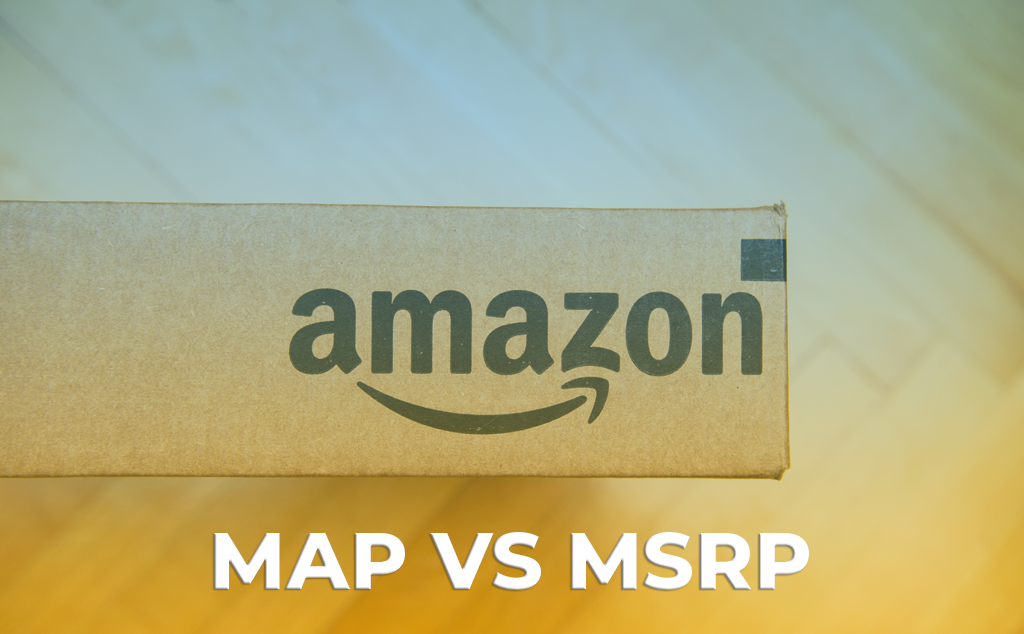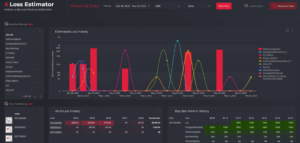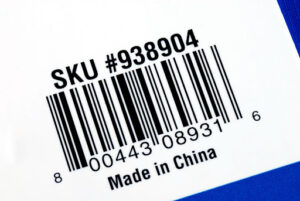In the highly competitive eCommerce space, dynamic pricing has become a crucial strategy for brands looking to gain an edge. As online shopping continues to expand, companies are working hard to win the attention of consumers and stand out in the market.
Knowing the distinction between MAP and MSRP pricing is vital for ensuring that you are pricing your products correctly, preserving your profit margins, and upholding your brand’s value.
What is MAP pricing?
Minimum Advertised Price (MAP) is the lowest price that a retailer is allowed to advertise for a specific product. Manufacturers set the MAP price to protect their brand’s value and profits by prohibiting the advertisement of prices below a certain level.
For example, if your brand sells sneakers (Nike, for example) and you set the MAP price for one pair at $99, no retailer can advertise that pair of sneakers for less than $99, either online or in-store.
If a reseller tries to advertise your brand’s product at a discounted price that goes below the MAP price, they will be in violation of your company’s MAP policies and can be subject to consequences.
How is MAP pricing calculated?
Determining the MAP price for your product can be difficult because it requires consideration of the interests of various groups, including brick-and-mortar retailers, online retailers, distributors (if applicable), and target customers.
There is no fixed formula or magic number for establishing a MAP price, as the price will vary for each brand based on its industry, niche, and market position.
When determining the MAP price, consider the following factors:
- The MAP price should not negatively impact your own profits
- The MAP price should reflect your brand value, reputation, and the quality of your products
- The MAP price should allow enough margin for resellers and distributors to make a profit as well
Can you sell below the MAP pricing?
Yes, it is possible to sell a product below the MAP price, but it is not allowed to advertise the product at a price below the MAP price (hence the A in the name). The MAP price is the minimum advertised price, so while a retailer can sell a product for less than the MAP price, they are not allowed to advertise it at a lower price. If a retailer does advertise a product at a price below the MAP price, they may be in violation of the manufacturer’s MAP policies and could face consequences.
Is MAP pricing legal in the United States?
MAP pricing is legal in the United States as long as it does not violate antitrust laws. The Sherman Antitrust Act prohibits agreements that unreasonably restrain trade, and the Federal Trade Commission (FTC) has taken the position that certain types of MAP agreements may violate this Act. However, not all MAP agreements are considered unlawful, and the FTC has provided guidance on how to create a MAP policy that complies with antitrust laws.
In general, MAP policies are more likely to be considered legal if they are used to protect the value of a brand and do not significantly limit price competition among retailers. If you are considering implementing a MAP policy, it is advisable to consult with an attorney to ensure that it complies with antitrust laws.
Does every manufacturer use MAP pricing?
Not all manufacturers use MAP pricing. MAP pricing is a pricing strategy that is used by some manufacturers to help protect the value of their brand and maintain their profits. It is not a requirement, and manufacturers have the option to decide whether or not to implement a MAP policy. Some manufacturers may choose not to use MAP pricing because they prefer to allow more flexibility in pricing for their products, or because they believe that a different pricing strategy is more appropriate for their business.
What are the benefits of MAP pricing for manufacturers?
There are several potential benefits of MAP pricing for manufacturers:
- Helps to protect the value of the brand: By setting a minimum advertised price, a manufacturer can help to maintain the perceived value of their brand and prevent it from being discounted too heavily.
- Maintains profit margins: By setting a minimum price, a manufacturer can help to protect their profit margins and ensure that they are not being undercut by retailers.
- Reduces price competition among retailers: By preventing retailers from advertising prices below a certain level, a MAP policy can reduce price competition among retailers, which can help to maintain the value of the brand and protect profit margins.
- Increases pricing power: By setting a minimum advertised price, a manufacturer can increase their pricing power and potentially charge higher prices for their products.
- Increases perceived value: By preventing heavy discounts, a MAP policy can help to increase the perceived value of a brand’s products.
It is important to note that while these are potential benefits of MAP pricing, it is not a guarantee that a MAP policy will be successful or that it is the right pricing strategy for every manufacturer.
What is MSRP?
The Manufacturer’s Suggested Retail Price (MSRP), also known as the list price or sticker price, is a recommended sale price for a product provided by the manufacturer to sellers. It is meant to maintain consistent pricing among different stores.
Keep in mind that retailers may not adhere to the Manufacturer’s Suggested Retail Price (MSRP) and customers may negotiate for a lower price when purchasing your products. The MSRP is simply a recommendation from the manufacturer and the selling price of a product may vary among retailers.
The Manufacturer’s Suggested Retail Price (MSRP) is a recommended selling price provided by the manufacturer or brand. It is meant to guide sellers in pricing their products and to help customers determine if they are paying a fair price. However, sellers are not required to use the MSRP as their selling price.
Sellers may lower the price below the Manufacturer’s Suggested Retail Price (MSRP) in order to clear excess inventory or to attract more customers during a sale. On the other hand, they may set the price higher than the MSRP if a product is in high demand and selling quickly.
Are MSRP and MAP the same?
MSRP and MAP are two different types of product pricing.
While “MAP” prices only take into account the lowest price at which a product can be advertised, “MSRP” represents the selling price recommended by the brand.
Sellers are expected to adhere to “MAP” policies. Advertising products at prices lower than “MAP” may be viewed as a breach of contract and could potentially lead to legal action being taken by the brand.
In contrast, “MSRP” is merely a suggested price provided by brands, and sellers are not required to follow it. “MSRP” serves as a guide for sellers, indicating the price that the brand expects them to sell its products at. “MSRP” functions as a kind of signpost, helping sellers to determine appropriate pricing for their customers.
MAP (Minimum Advertised Price) pricing helps to maintain the MSRP (Manufacturer’s Suggested Retail Price) by preventing deep discounts on products. This is especially important for brands that want to establish a reputation for high quality, as excessively discounted prices can give the impression that the products are not worth their MSRP.
MSRP (Manufacturer’s Suggested Retail Price) provides retailers with a guideline for pricing products at a level that will maximize profits, while still adhering to the minimum threshold set by MAP (Minimum Advertised Price).
How to enforce MAP pricing on Amazon MAP violators?
There are a few steps you can take to enforce MAP pricing on Amazon:
- Identify any MAP violators: Monitor your listings on Amazon and look for any sellers who are advertising your products at prices lower than the MAP. Keep track of these violators and their listings.
- Contact the violators: Reach out to the sellers who are violating MAP and let them know that their pricing is not in accordance with the agreed-upon MAP. Provide them with the correct MAP pricing and ask them to update their listings accordingly.
- Report the violators to Amazon: If the violators do not respond or do not update their listings, you can report them to Amazon. Amazon takes MAP violations seriously and may take action against sellers who do not follow the agreed-upon pricing.
- Monitor and follow up: Keep an eye on your listings and follow up with any violators to ensure that they are adhering to the MAP. You may need to repeat these steps on a regular basis to ensure that MAP is being followed.
It’s important to note that you should always communicate with the violators in a professional manner, as confrontational or aggressive behavior can damage your relationships with them.
Summary
Properly setting MAP (Minimum Advertised Price) and MSRP (Manufacturer’s Suggested Retail Price) can benefit your business in several ways, such as maintaining stable profit margins, enhancing brand reputation, and fostering good relationships with sellers and retailers. It is also crucial to monitor compliance with MAP policies and ensure that sellers are adhering to them. AMZ Watchdog is the premier brand management company that helps manufacturers and brands monitor MAP, enforce utility and design patents, and grow their revenue and profitability on Amazon.




